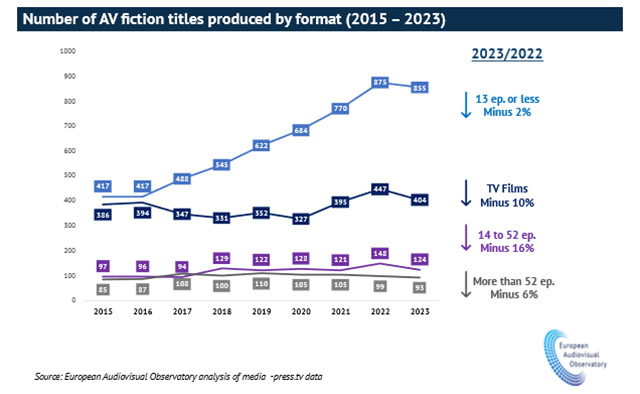Travel
The eight most beautiful market halls in Europe

Artfully layered vegetables and fruit, elegantly draped fish on ice, local wines and liqueurs for tasting, all in a lively sales atmosphere and venerable buildings: some market halls, especially those with a long tradition, are a first-class visual, acoustic and olfactory experience and at the same time a dive into the everyday life of a foreign city.
After all, where better to strike up a conversation with the locals than over a familiarising sip or small tasting snacks? So it’s no wonder that more and more city travellers are skipping the great art rather than missing out on a stroll through the market. Some of them have long since become top sightseeing attractions, like these eight representatives between Barcelona and Budapest.
Barcelona: La Boquería
The official name of the market located on the famous Rambla in the centre of the city is Mercat de Sant Josep, but everyone just calls it La Boquería. It even markets itself as the “best market in the world”, and the marketplace, which dates back to the 13th century, is definitely one of the oldest and largest! Around 300 stalls sell an incredible variety of vegetables, fruit, fish, meat, herbs, mushrooms, ham, olives and candied fruit. And all this from eight in the morning until half past eight in the evening (except on Sundays) and often of outstanding quality. It’s no wonder that Barcelona’s celebrity chefs shop in the more than 2,500 square metre hall, as do the locals.
It’s best to do as they do: avoid the overpriced stalls at the entrance and stick to the delicacies from the vendors at the edge of the hall. Try the market-fresh tapas at “El Quim de la Boquería”, savour a paella or a glass of vino tinto, red wine. Don’t miss the lavishly stocked fish rondel in the centre of the market. But it’s not just the goods and traders that are an experience, the architecture of the market is also worth seeing. In addition to the arcade construction, the Art Nouveau arch above the market entrance, which is adorned with colourful window glass elements and supported by two mosaic-decorated columns, deserves special attention. Guests can also learn about this and much more on guided foodie tours. Find out more.
Paris: Marché couvert des Enfants Rouges
France’s capital is not only known as the (main) city of love, but also as a city of culinary delights, although the two are not so far apart. The saying “The way to the heart is through the stomach” is a reminder of this. And if lovers (and everyone else) want to shop for exquisite food in Paris, they have plenty of options. One of the most charming is located on Rue de Bretagne, a side street in the Marais district. Founded in 1615, the “Market of the Red Children”, which owes its name to the children of the neighbouring orphanage who once wore red clothing, is the oldest covered food market in Paris.
It has since become a meeting place for the bobos, the Parisian bourgeois bohemians. No wonder, the area with around 20 shops has a timeless charm. Lined with fruit and vegetables, cookshops and snack stalls, the large fish and seafood stall forms the heart of the market. However, you don’t have to have a kitchen to enjoy the range of regional and international specialities. The many bar tables of the Italian, Lebanese, Japanese and, of course, French restaurants invite you to linger – which is possible every day (except Mondays) until half past ten in the evening. Find out more.
Florence: Mercato Centrale
For 150 years, the mighty cast-iron structure next to the Medici tomb of San Lorenzo has been attracting diners on a culinary excursion. This is not only a revelation acoustically and olfactorily, but also visually. Built by the architect of Milan’s magnificent Vittorio Emanuele II Gallery, it has two floors under its glass and cast iron dome. Downstairs you can shop cheaply and upstairs – a little more expensive, but until midnight – you can feast and savour.
Fruit and vegetables from all corners of Tuscany, fish and meat, skilfully stacked with handwritten price boards, as well as cheese and, of course, fresh pasta. The title of “most beautiful stall” probably goes to Oreste Carocci’s tripe shop, which is designed like an altar. Another top address is the traditional butcher Perrini, who sells whole legs of ham and the much-praised goose salami from the Maremma. The tripe rolls at the “Da Nerbone” snack stand are also a cult favourite. As in many cities, the Mercato San Lorenzo aka Centrale now also serves as a backdrop for a more conscious approach to food and crafts. In addition to show cooking and cookery courses, art exhibitions and cultural events are regularly held here. Read more.
Budapest: Great Market Hall
Built at the end of the 19th century in neo-Gothic style, the central market hall is enthroned like a church at the Pest end of the Freedom Bridge. Brick architecture, colourful Zsolnay tiles and turrets on the sides contribute to its sublime charm and certainly also to its award as the most beautiful market hall in Europe. However, its true greatness is revealed inside. The filigree steel construction gives the XXL hall a light and airy appearance and ensures an even, calming hum and buzz of the various market sounds.
The ground floor is dominated by fruit, vegetables and peppers as far as the eye can see, with typical Hungarian specialities such as bacon, salami and kolbász (sausage), as well as the products of the Hungarian woolly pigs, the mangalica. Just about everything from poultry is also sold. There are no goose feet, duck stomachs or the controversial foie gras on offer. Anyone looking for a morally impeccable souvenir is well advised to buy saffron threads or honey. The gallery on the upper floor offers hearty Hungarian specialities such as cabbage rolls or goulash soup. Read more.
Madeira: Mercado dos Lavradores
Madeira is THE flower island par excellence. So it’s only natural that there is a market for them. There are several, but the most beautiful is the Mercado dos Lavradores in the old town of Funchal. Anyone entering the spacious Art Deco-style market hall will find themselves in the middle of a colourful paradise of delicious fruit and fragrant flowers. Only built in 1940, the hall is still quite young compared to its European neighbours, but has long been an institution in the economic and cultural life of the capital, and for many it is even the most beautiful place on the Portuguese island.
The atmosphere in the hall is both lively and cosy due to the smells and sounds. This is also due to the fact that some traders wear the typical red and colourful Madeiran costume and loudly advertise their wares across the two floors of the hall. The fish market in the hall next door is also exotic: huge tuna fish are on the sales tables and, of course, the Portuguese island’s speciality, black scabbardfish, which resemble eels that have grown far too bigu. Read more.
Lisbon: Mercado da Ribeira
Lisbon’s main market, Mercado da Ribeira, opened more than 130 years ago in what is now the trendy harbour district of Cais do Sodre. It is divided into two parts under the huge oriental dome. One half is still occupied by traditional market stalls selling fresh produce such as fish, fruit and vegetables. The other of the two airy glass and iron structures, on the other hand, was transformed into a gigantic gourmet paradise ten years ago. The concept: you pick up something from the almost 50 food stalls around you and sit down at the long wooden tables in the centre of the hall. You can choose from the finest delicacies such as sardines marinated in olive oil, chocolate from Arcadia in Porto, ham from the Alentejo and fresh Vinho Verde from the country’s best vineyards. The fact that there is something going on here every day until midnight is not least due to occasional concerts and other events. Good to know: Some of the stalls are run by well-known local chefs such as Alexandre da Silva, Miguel Castro e Silva or Henrique Sá Pessoa. Read more.
Berlin, Markthalle Neun
Located in the centre of the multicultural Kreuzberg district, this market hall was long considered the most magnificent of Berlin’s once 14 numbered market halls. Then stagnation and decay put the 120-year-old Wilhelminian-style gem into a deep sleep. This was ended in 2011 by a residents’ initiative. Since then, the cast-iron pillars have once again been a hive of activity, with a focus on regional and sustainable agricultural produce. Strong: from two days in the beginning, the market has now been increased to five, which not only pleases the 40 or so traders from the various farm shops and organic farms, but also the visitors. The range of exhibitions and cultural events is also well received. Find out more.
Rotterdam: Markthal
Do market halls have to be old and venerable? Not at all, they can also be futuristic. The arched Markthal in Rotterdam proves it. This first completely covered food market in the Netherlands opened in 2014 on Blaak Square, where there has always been a weekly market. And it has long since become an integral part of the city.
Visitors can do their shopping at around 100 market stalls and in 15 delicatessens, sheltered from the wind and weather, and there are also several restaurants and even a cookery studio. All of this takes place against a stunning backdrop: A single large painting of oversized fruit and vegetables in bright colours stretches across the hall’s enormous ceiling arch – the largest work of art in the Netherlands. The “Markthal Experience”, for which you can register at the information point in the building, offers regular guided tours of the new hall. Find out more.










